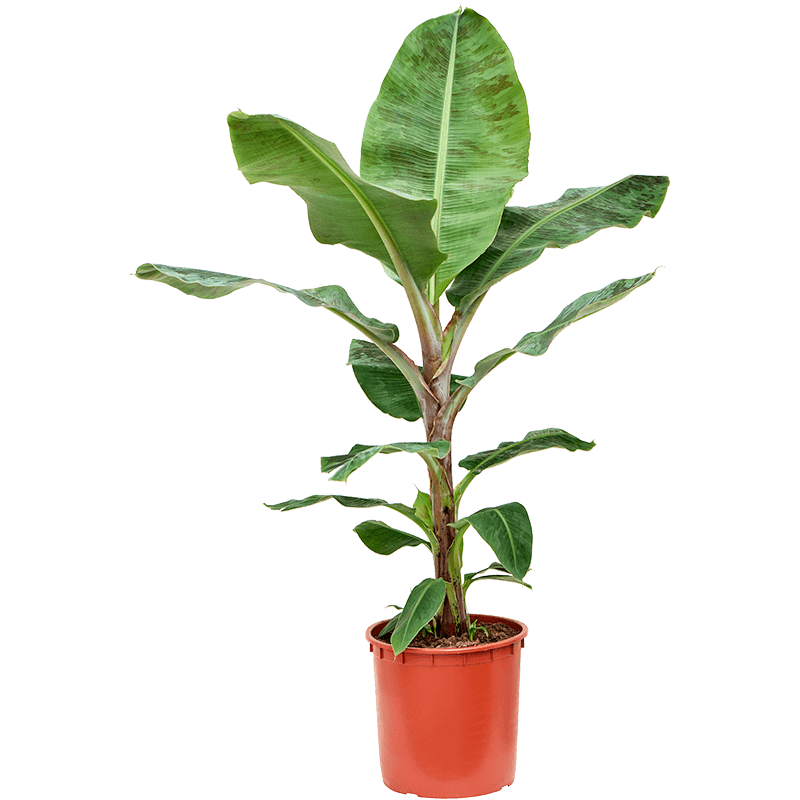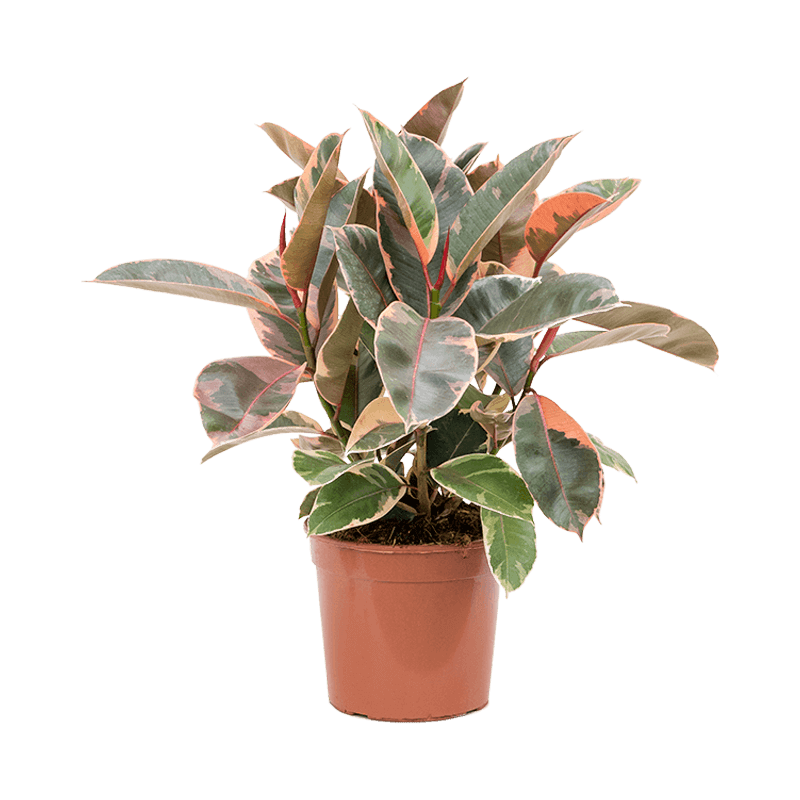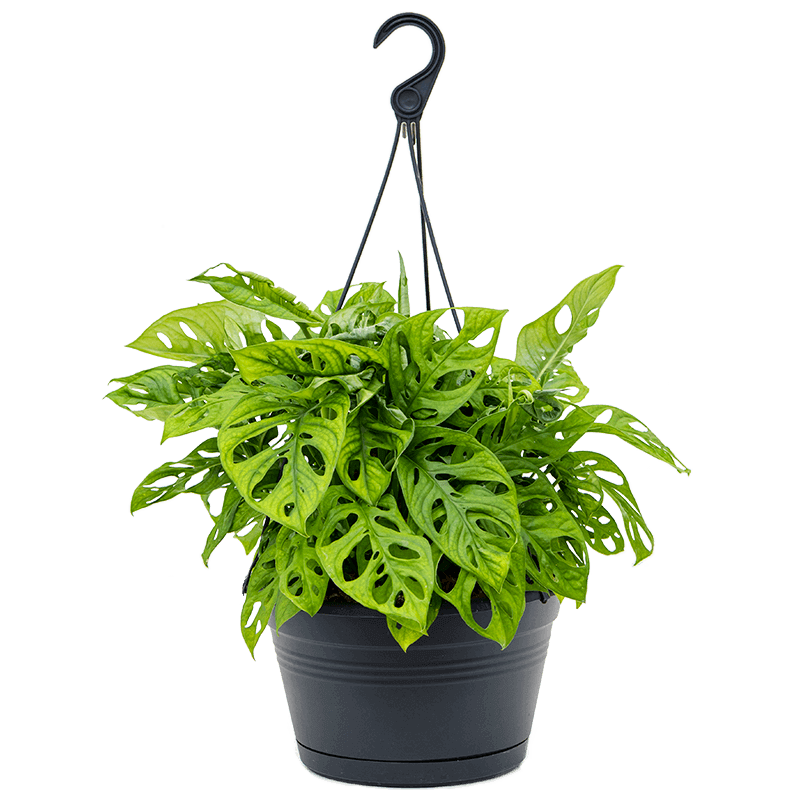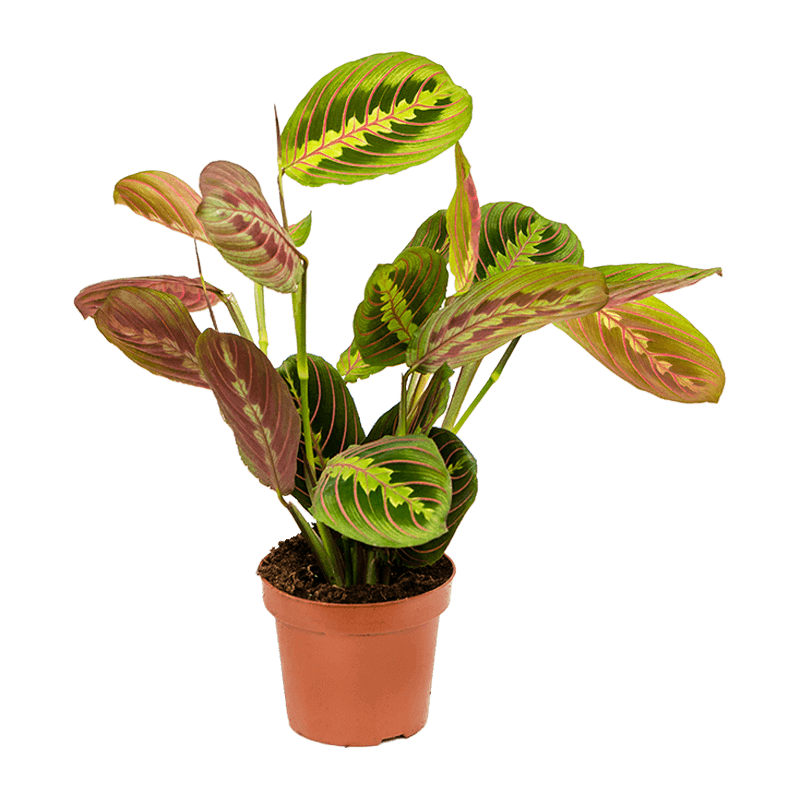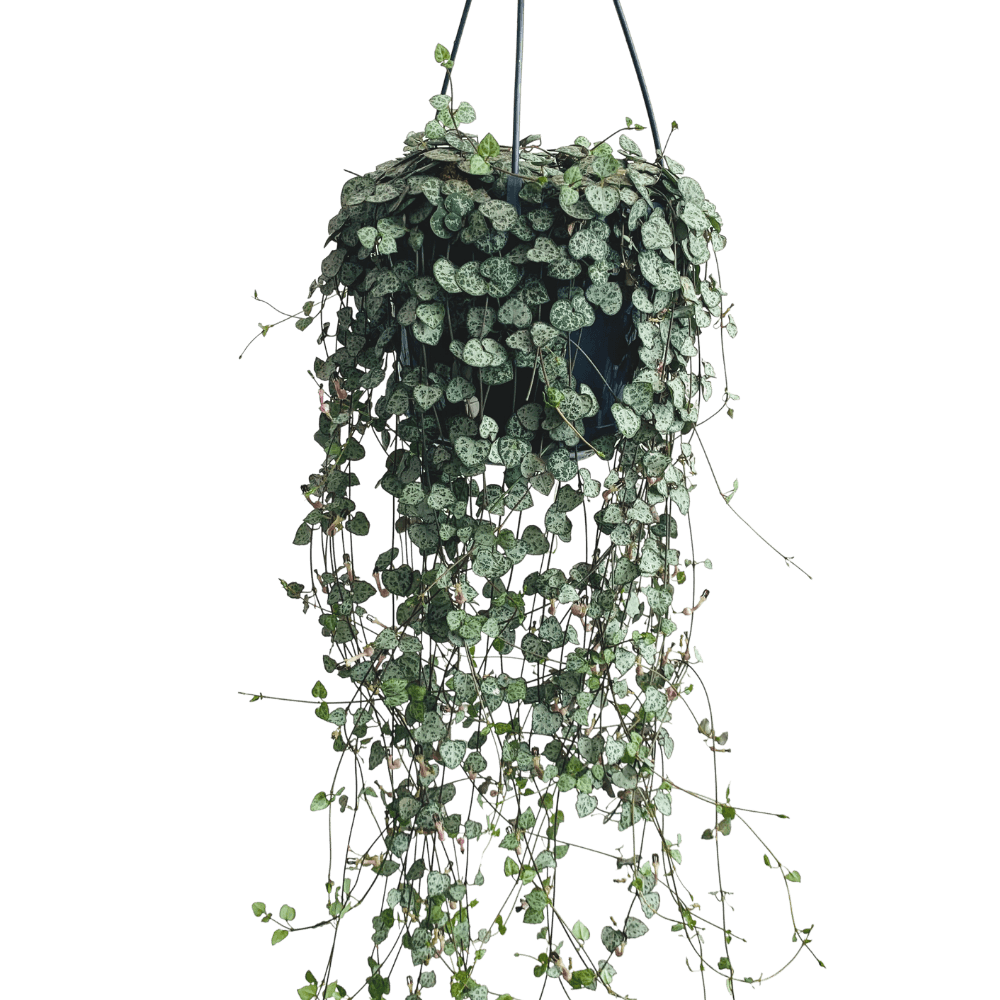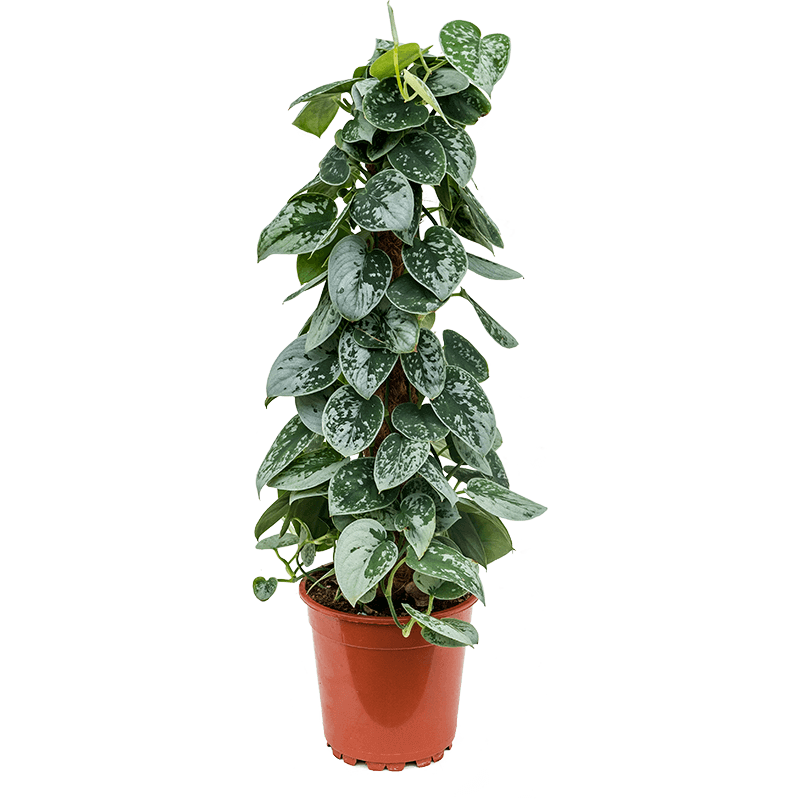how to care for musa tropicana (banana plant)
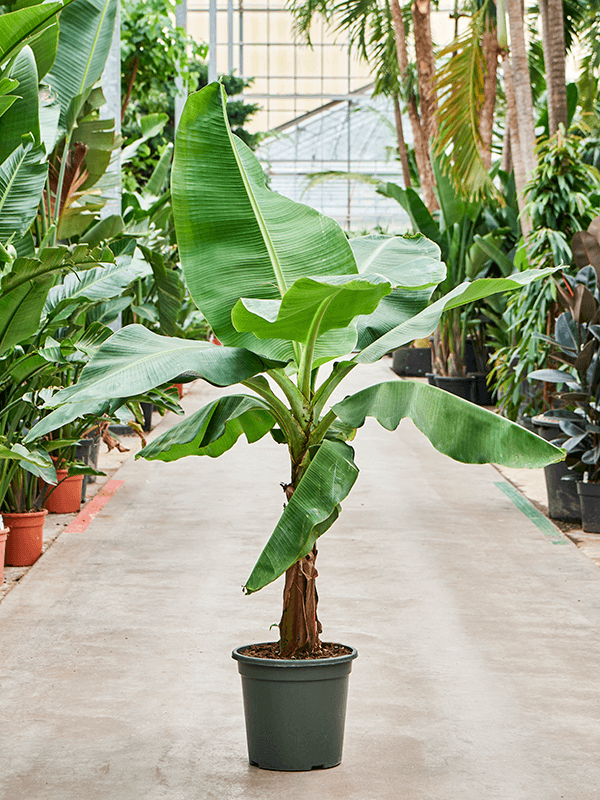
quick care guide musa tropicana
 |
Once a week in summer; once every two weeks in winter |
 |
Give it the most sun you can – she can tolerate some direct light or even partial shade |
 |
Fertilize every week during growing season |
 |
Pet friendly |
 |
Strong air purifier |
The dwarf banana plant requires very low maintenance and given proper conditions, she will reward you with a new leaf every week! She thrives in most light conditions but grows fastest with bright, indirect light. Water her often so that the soil stays evenly moist (but not soggy), grow in temperatures between 18°C – 25°C and fertilize her every 1-2 weeks during growing season with a weak fertilizer.
detailed care guide for musa tropicana
Scientific Name: Musa Tropicana (a.k.a. Banana Plant, Banana Tree)
Varieties: There are over 60 different cultivars of the Banana Plant, most of them not fit for indoor gardening. Most of the indoor varieties do not produce fruit or if they do, the fruit is not edible. The most common banana plant for indoors is the Musa Dwarf Cavendish, a compact plant that can still reach heights of 2 meters.
Origin: Southeast Asia
Light: Most types of bananas plants prefer bright, indirect sun. Some variegated varieties can scorch easily and will do better in partial shade. Banana trees can also adapt to lower light levels but will grow slower.
Water: Since banana trees are tropical and originate in rain forests, they need a lot of water and plenty of moisture in the air. They do best when in groups rather than as single specimens. Keeping plants close together helps retain moisture in the leaves. Provide about half a cup of water weekly and check frequently to make certain the soil stays evenly moist. Avoid over-watering which can cause root rot. The soil should be moist but not soggy at all times, if possible.
Soil: The soil should be well-drained, deep, and organically amended. Slightly acidic soil (5.5 to 6.5 pH) is preferred.
Temperature: Bananas thrive in warm, humid conditions, but protect plants against temperature extremes as much as possible. Even very hardy, cold tolerant banana plants like consistent temperatures ranging between 18 and 25 degrees Celsius.
Fertilizer: This plant has large leaves which form very rapidly during the growing season, so much so a brand new leaf every 10 days isn’t uncommon, therefore feeding on a frequent basis is a must to fuel that level of growth. Feed well every 1 or 2 weeks using either a general liquid house plants fertilizer. Do not fertilise when the plant isn’t growing or if you don’t want to support any new growth, for example if it’s already overgrown and further height is undesired.
Humidity: The leaves might look tough but are actually very delicate and will rip easily if certain conditions are poor. Low humidity is often a contributing factor to leaf damage so moisture retentive pellets in the drip tray would be helpful, along with a regular misting.
Pruning: Banana plants that don’t fruit rarely require pruning. The only reasons to prune a musa tropicana are to control its size, remove dead or old leaves, or restore its shape.
Re-Potting: Young plants, also known as “pups”, will fill small pots quickly so you need to repot them into bigger ones quite frequently, this may be as much as two or three times in the first year. Normal potting compost at this stage is all you need. As they get older you can reduce the repotting to once a year.
Propagation: The easiest and probably the only way in which you’ll propagate your banana tree is by division. The banana tree shoots baby banana trees and when those pups grow and develop a root system of their own – you can go ahead and divide them from the mother plant.
Diseases and Pests: Root rot can affect banana plants if you are over-watering them (although they’re less susceptible to it than other tropical plants).
Toxicity: These plants are not toxic so they’re perfect for households with pets that tend to nibble on plants.
musa tropicana origins & overview
Often Dwarf Banana plants are found growing in parts of Asia for mass cultivation and they are sometimes grown as tall specimen plants in gardens at the back of borders to add a touch of the tropics. However as they need significant Winter protection it’s relatively uncommon for them to be grown like this by the average gardener. It might therefore seem an unlikely houseplant but actually it’s been grown indoors since the Victorian times, where they were proudly displayed in their humid, warm and sunny conservatories. Of course the Victorian conservatories were a little different (and significantly bigger) than the ones we have today, however the basic principle is similar. Although true Banana plants are far too large for any house, the Musa Tropicana, or Dwarf Cavendish, fits right in. They can of course be grown in other rooms of the house, but a brightly lit space is an ideal situation. These “Dwarfs” can still easily reach 2m, so with this in mind a young new plant will live happily on a window ledge for a few years at most but that’s it, afterwards the space will have run out and you will need somewhere bigger. They’re can be fussy when it comes to care and the leaves although massive and quick growing are incredibly weak and susceptible to damage. Feeding, copious watering and large containers are necessary.musa tropicana light requirements
Do you know what’s great about the Musa Tropicana? You can place it almost anywhere you want! It really likes sunlight and it can actually withstand even direct sun rays without getting burned. Said that, you should always acclimate your plant to direct sunlight. Even plants that love direct sunlight can get damaged before they acclimate to direct sunlight. So slowly give it more and more sunlight. The Banana Plant will also be alright with medium light conditions. It won’t grow as fast as if it were in a brightly lit spot, but it will grow nonetheless. So you can place it near any window (east, west, south or north) or even a couple of feet away from the window. It’s important that it get at least a few hours of sunlight during the day. The intensity of the light is not that important for its maintenance.
how to water the musa tropicana
Water your dwarf banana tree when the first 5-10 cm of soil is dry. Just stick your finger in soil and if it’s dry by the length of your finger – it’s time to water it! Water it thoroughly so that the water reaches all the roots and let the excess water drain from the drainage holes. Having drainage holes on the bottom of the pot is really important. You don’t want to let your banana tree sit in water for days and days. As you may know, overwatering is the #1 plant killer, so throwing out the excess water is a must.repotting the musa tropicana
The Musa Tropicana doesn’t like to be rootbound so you will need to repot it quite frequently, especially when it’s young. Young plants, also known as “pups”, will fill small pots quickly so you need to repot them into bigger ones quite frequently, this may be as much as two or three times in the first year. Normal potting compost at this stage is all you need. Once the plant reaches 50 cm you will need to repot it less often, about once a year. You shouldn’t wait until the Banana Plant gets super root bound before repotting it. It’s good to freshen up the soil every year – if it doesn’t get root bound sooner. The best is to repot your plants is in spring, but if you forgot or for some reason you didn’t want to do it then, you can repot it in summer and autumn, also. A general houseplant soil mix will do fine, just be sure it has aeration materials in it also, like sand, perlite or pumice. That’s important so that water can actually go through the soil and reach all the roots.

Decorative pots are approx. 11 cm.

Plants have a diameter of 11 to 13 cm.
Decorative pots are approx. 14 cm.

Plants have a diameter of 14 to 16 cm.
Decorative pots are approx. 17 cm.

Plants have a diameter of 17 to 19 cm.
Decorative pots are approx. 20 cm.

Plants have a diameter of 20 to 24 cm.
Decorative pots are approx. 25 cm.
extra small |
Plants - 8 to 10 cm diameter Pots - 11 cm |
small |
Plants - 11 to 13 cm diameter Pots - 14 cm |
medium |
Plants - 14 to 16 cm diameter Pots - 17 cm |
large |
Plants - 17 to 19 cm diameter Pots - 20 cm |
extra large |
Plants - 20 to 24 cm diameter Pots - 25 cm |

